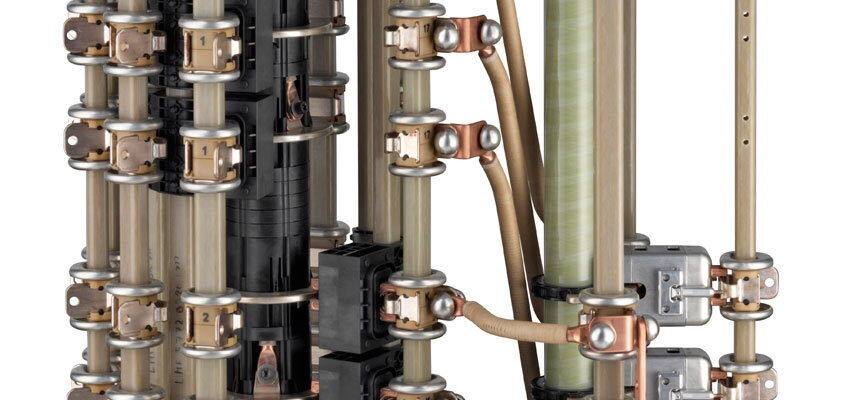
Column: Tap-changer know-how
Enhancing the switching capacity of change-over selectors with minimized gas production 1. General Regulated power transformers are equipped with a regulating winding with multiple taps...
byRainer FROTSCHER

Enhancing the switching capacity of change-over selectors with minimized gas production
1. General
Regulated power transformers are equipped with a regulating winding with multiple taps which are connected to a tap-changer to adjust the transformer ratio. On-load tap-changers (OLTCs) are used if the ratio shall be changed while the transformer is under load. These tap-changers consist of a tap selector which connects two adjacent taps of the regulating winding and a diverter switch which performs the load switching operation between the two selected taps without interrupting the load current. The tap selectors often feature a change-over selector to reverse the polarity of the regulating winding or to add or bypass a coarse tap winding. The change-over selector can only be operated in the mechanical mid-position of the tap selector. At this position, the load current flows through the tap selector terminal which is connected to the end of the main winding. The regulating winding and the change-over selector are in no-load condition then.
When the change-over selector is operated, the regulating winding (and so the +/- contacts of the change-over selector) take a floating electric potential. The floating potential is now determined only by the capacitive coupling to the neighbouring winding(s) and the transformer core or tank wall (both earthed), see Fig. 1 as an example.

Figure 1. Capacitive coupling of the regulating winding (delta connection, reversing switch):
U1 High voltage winding voltage
UF Regulating winding voltage
C1 Winding capacitance between main winding and regulating winding
C2 Winding capacitance between regulating winding and ground
The capacitive current which must be broken and the recovery voltages on the open change-over selector contacts so generally depend on the voltages of the windings adjacent to the regulating winding, the length and position of the regulating winding, the geometric winding arrangement and the ratio between C1 and C2. They can reach values which cause switching sparks or low-energy arcs. Even if there are no methods to reduce the capacitive current for a given winding arrangement, measures can be applied to reduce the recovery voltages and minimize the gas production which is caused by the switching sparks/arcs. They will be discussed in the following.







